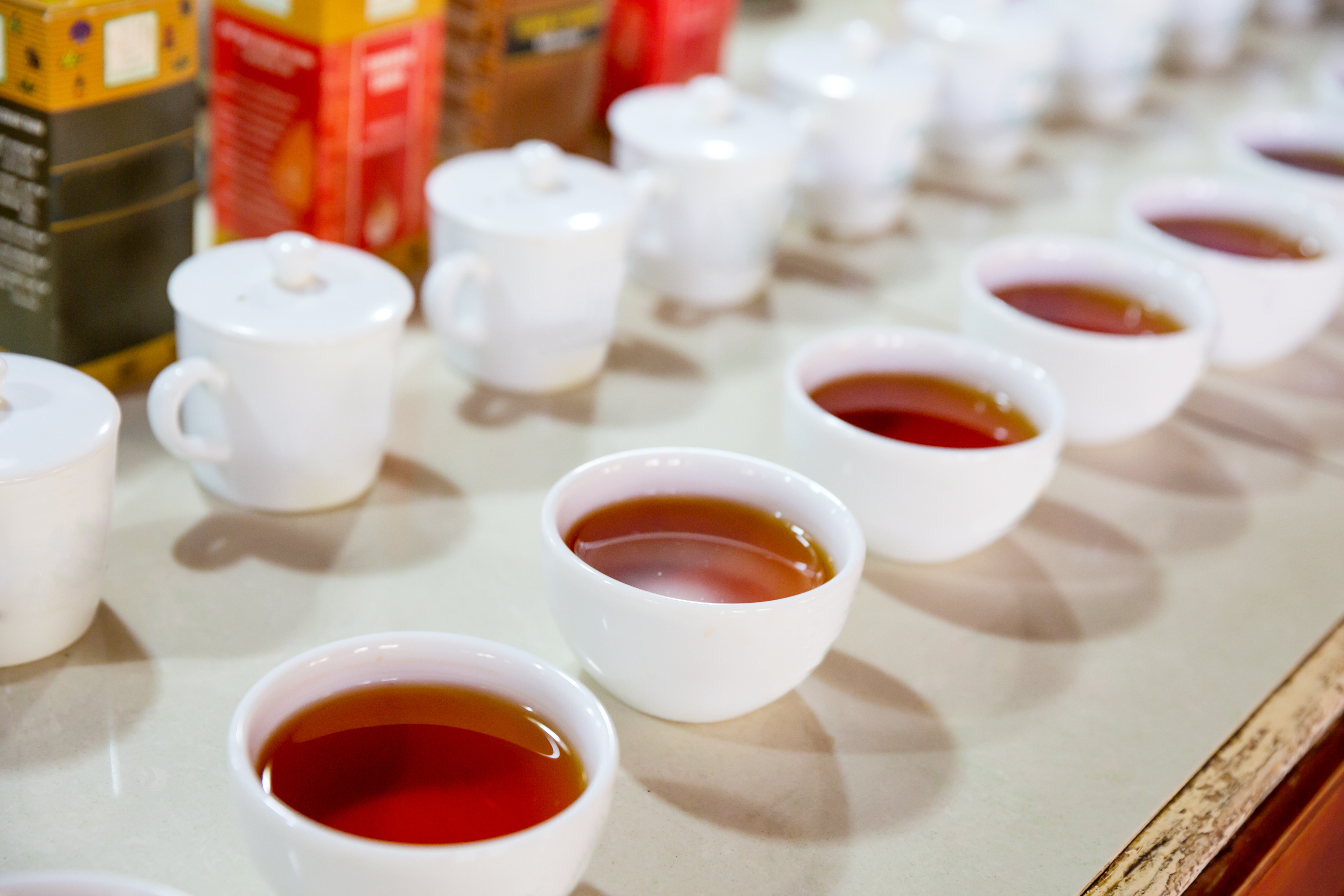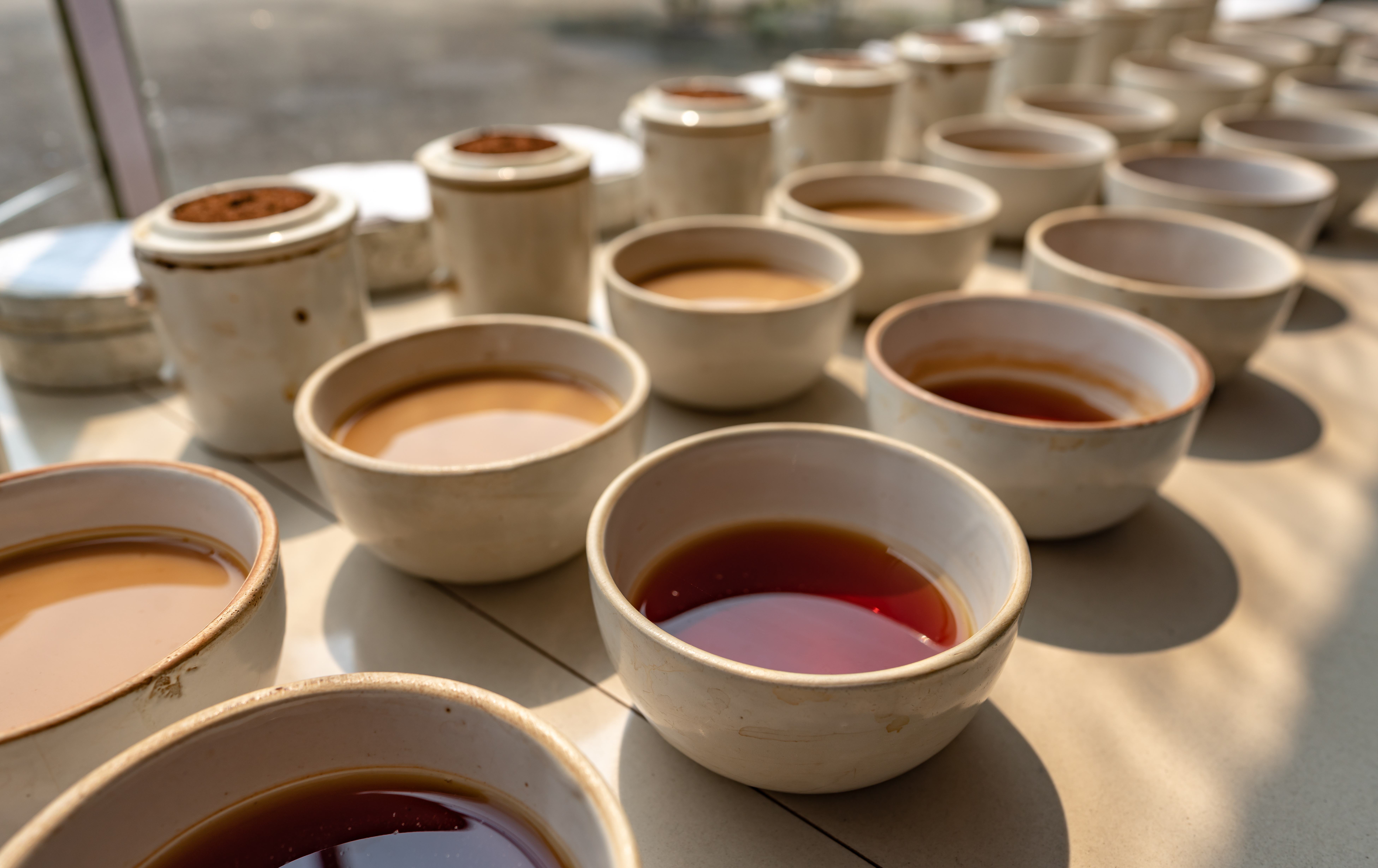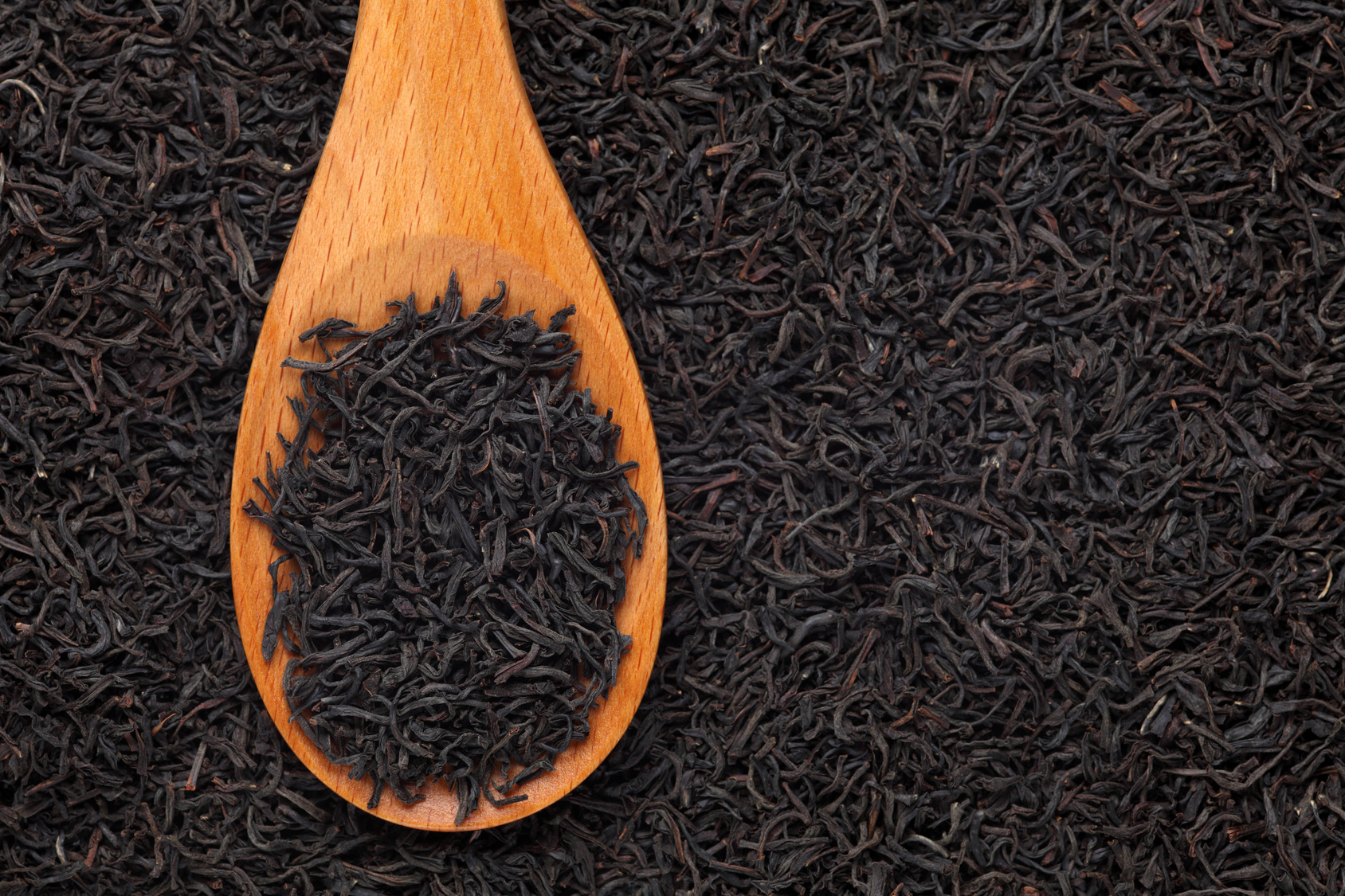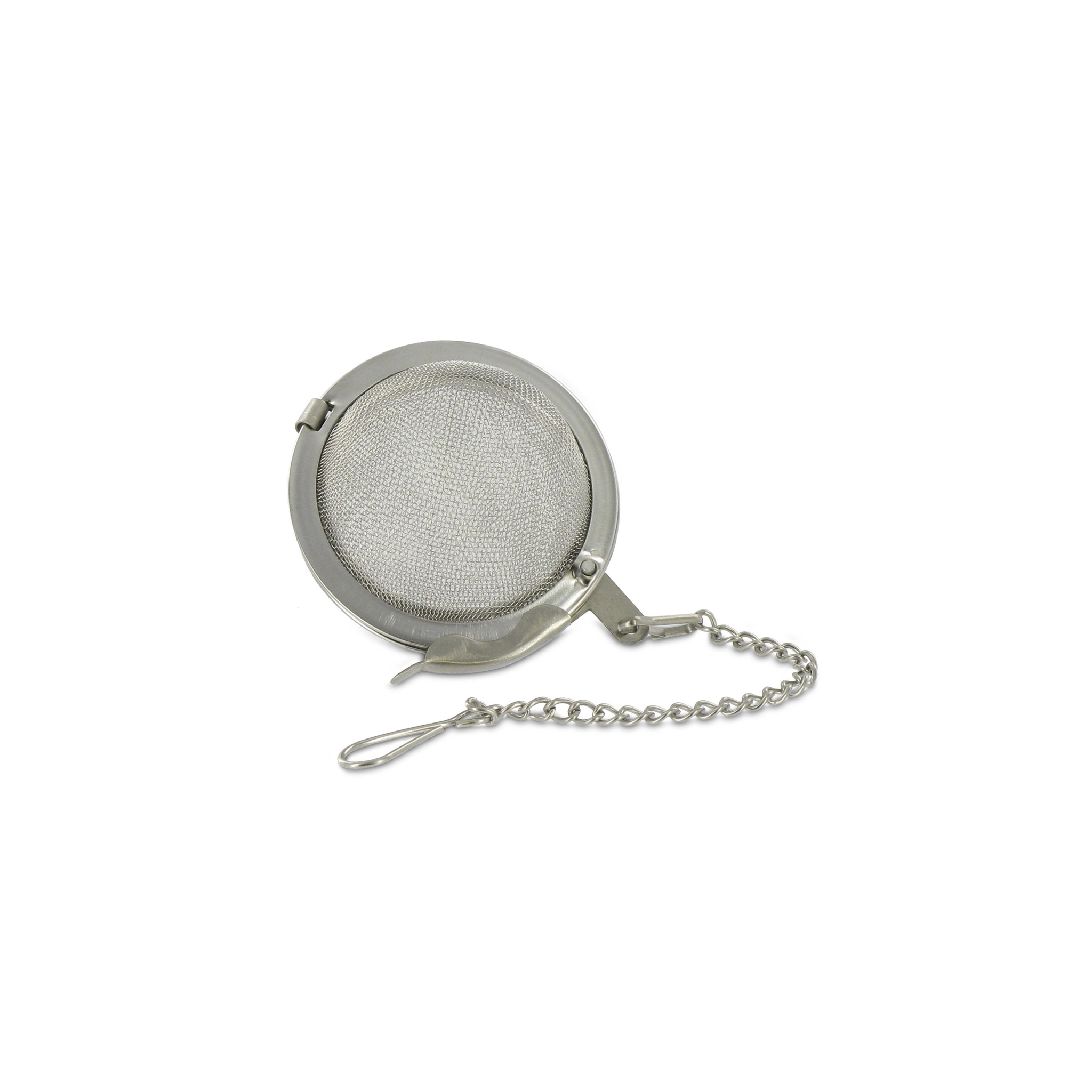Tea tasting, a skill refined over centuries, helps one appreciate both the simplicity and nuances of tea. This comprehensive guide explores the art of tea tasting, offering insights into understanding tea quality and the intricate process of blending.

What is Tea Tasting?
Tea tasting, or "cupping," involves evaluating the characteristics of tea—such as appearance, aroma, and taste—to determine its quality. This process is essential for tea sommeliers, buyers, and enthusiasts, as it offers a deeper connection to the tea-drinking experience. By engaging in tea tasting, one can differentiate between varieties, understand the impact of terroir, and appreciate the craftsmanship involved in tea production.
The Art of Tasting Tea
“What’s amazing about tea is that it all comes from one plant, Camellia sinensis, which will taste completely different depending on how it is produced.” – Tea Taster, Sebastian Michealis
It may amuse our readers that Sebastian Michealis’ taste buds are insured for one million pounds. UK-based Michealis is renowned for his superior tea-tasting skills, making him one of the best tea tasters in the world. His expertise highlights the fascinating diversity that can arise from a single plant species, Camellia sinensis, which produces a wide range of palates depending on its processing.
Tea, like wine, is evaluated for various desirable properties and marketed accordingly across different regions. Without the discerning palate of tea tasters, the tea trade would not have flourished as it has, offering an array of varieties that showcase the nuances of this remarkable plant.
To evaluate tea quality, tea companies employ specialized tea tasters. These professionals are responsible for selecting the teas that comprise the company's blends. Their goal is to ensure that each packet of tea maintains a consistent taste, despite the variations caused by seasonal changes and differing origins.
According to tea tasters, the standard procedure for preparing a tea sample involves weighing out 0.10 ounces (2.9 grams) of the tea into a brewing pot and infusing it for five minutes in 120 milliliters (4.1 ounces) of boiled water. The liquor is then strained into a tasting bowl, and the infused leaf is retained on the upturned lid. The taster first examines the dry leaf for its complexion, style, evenness, stalk, and fiber content. This initial inspection provides insight into the leaf’s quality and processing (note that the size of the sample may vary).
Tea tasters use a unique slurping method to ensure the tea reaches a range of taste buds at the back of the mouth, followed by a gusty spit into a spittoon. This challenging technique often takes months to master. Skilled tasters can identify the specific origin of a tea leaf and meticulously hunt for flaws in the tea. As they purse their lips with the aftertaste, they may detect imperfections such as "bakey" (scorched), "brassy" (under-fermented), "astringent" (too harsh), or "hungry" (too weak). Tea grown during a monsoon may be described as "weathery," a quality easily recognized by its flabby, dull taste with extra moisture.
"Tea tasting is like embarking on a sensory adventure. Each cup reveals a story, a journey through the tea gardens and the hands that nurtured them." - Tea Taster at J. Thomas & Company.
A desirable outcome from a taster’s evaluation includes a "full, rounded, pungent, smooth" profile and a deep red color, referred to as "point." The color of the tea is crucial in marketing, as consumers often "drink with their eyes." Tea tasters typically evaluate CTC tea with milk to align with consumer preferences. However, overvaluing a tea can lead to paying more than it deserves, highlighting the risks involved in the process.

Taste and Aroma
Taste is primarily experienced on the tongue and other surfaces within the mouth. There are four main tastes—salt, sour, sweet, and bitter—each detected in specific areas: sweetness at the tip of the tongue, bitterness at the back, saltiness at the tip and sides, and sourness at the back edges. Astringency or pungency, while not a taste, is a sensation felt on the gums and parts of the cheek. As the liquor is swilled around the mouth, its thickness, body, or viscosity is assessed.
"When the tea taster takes the tea into his mouth with a loud sucking noise, the liquor is swilled around the tongue and gums, and the aroma is drawn to the back of the mouth and up to the olfactory nerve in the nose. The taster thereby tastes, feels, and smells the liquid." — Deepak Sarma, Empanelled Tea Taster and Blender, Walmart
Aroma plays a critical role in tea tasting, detected by the olfactory nerve. Without this sense, distinguishing between different teas would be challenging, as taste alone does not reveal the full nuance. The aroma, combined with the tea's infusion—i.e., the brewed leaf—plays a vital role in evaluating tea quality. A coppery infusion signifies good quality, whereas a dull infusion indicates poor quality.
“Infusion very seldom betrays.” – Deepak Sarma

Understanding Tea Quality
Quality in tea is multifaceted, determined by the variety of the tea plant, the environment in which it is grown, the harvesting practices, and the processing methods used. High-quality tea typically presents a balanced taste profile, a clean and bright liquor, and an inviting aroma.
- Appearance: The dry leaf's size, shape, and color are inspected for uniformity and indication of proper processing. For instance, well-rolled leaves with minimal breakage suggest careful handling.
- Aroma: The scent of both the dry and infused leaves offers clues about the tea's freshness and taste potential. Aromas can range from floral and fruity to earthy and nutty, each indicative of the tea's origin and processing.
- Taste: Upon tasting, the tea's palate should be assessed for its nuance, balance, and aftertaste. A good tea will have a clear, distinct taste with a pleasant lingering aftertaste, indicative of its quality.
- Liquor: The tea's liquor, or brewed tea, is observed for its clarity and color. High-quality teas usually yield a bright, clear liquor, with colors varying from pale yellow to deep amber, depending on the type of tea.
.jpg)
The Art of Blending
Blending tea is both a science and an art, where different teas or natural ingredients like herbs, flowers, or spices are combined to create a unique taste profile. A master blender understands how various teas complement each other and how additional ingredients can enhance the tea's taste.
- Balance: A well-blended tea has a harmonious balance of palate, where no single ingredient overpowers the others. The goal is to create a blend that is greater than the sum of its parts.
- Consistency: Blending ensures that each batch maintains the same taste profile, providing consumers with a reliable tea experience.
- Innovation: Blending allows for creativity in tea making. By experimenting with different combinations, a blender can develop new and exciting teas that appeal to a variety of palates.
Innovation in Tea Industry
- Computerized Blending: Modern technology has transformed tea blending. Companies now use computerized systems to achieve cost-effective blending without compromising quality. In contrast to manual blend papers, computers handle the process more efficiently.
- TESS (Tea Evaluation Support System): This mechanized tasting table enhances the speed and efficiency of tea evaluation. Capable of tasting up to 350 cups per hour, TESS allows a taster to process up to 1500 cups per day, compared to 700-800 cups in a traditional setup. The system automates boiling, pouring, and washing, ensuring uniformity and efficiency in tasting.
We hope that with day-to-day improved technology, there will be some more innovative ideas pouring in which will bring some radical changes in the existing tea trade practices.

Improving Your Tea Tasting Skills
- Practice Regularly: Just like any other skill, regular practice is essential to become proficient in tea tasting. The more teas you taste, the better you will become at identifying subtle differences and nuances.
- Expand Your Palate: Tasting a wide variety of teas from different regions and processing methods will broaden your palate and deepen your understanding of tea's diversity.
- Study the Lexicon: Familiarize yourself with the terminology used in tea tasting. Understanding terms like "astringency," "body," and "finish" will help you articulate your tasting experiences more effectively.
- Keep a Tasting Journal: Documenting your tasting experiences in a journal allows you to track your progress and remember the characteristics of the teas you've tasted. This practice will help refine your tasting skills over time.
-
Mastering the art of tea tasting is a journey that deepens one’s appreciation for this ancient beverage. By understanding tea quality, the nuances of blending, and the industry's innovations, both enthusiasts and professionals can explore the depths of palate and craftsmanship in every cup. Whether you're a seasoned taster or new to the world of tea, this guide provides a pathway to becoming more attuned to the subtleties of tea.
The Tea Lexicon
A step towards choosing the best tea involves knowing these terms. A must for a true tea aficionado, you also gain insights into the sensory science behind tea tasting. One of TeaOrb’s missions is to popularize tea along the lines of the finest wines. If you are into wines, you will notice familiar terms from the wine lexicon in the 'The Contact' section of the product page on this website.
Dry Leaf
- Acceptable: Despite deficiencies, saleable.
- Adhesive: Well-made wiry teas appear to stick together.
- Attractive: Good looking, well-made, uniform in color, size, and texture.
- Black: Fermented or oxidized tea.
- Blister: Rapid removal of moisture causes blistered tea leaves.
- Bloom: Sheen or luster or shine.
- Broken: Broken by rolling or passing through a cutter/breaker.
- Case-hardening: Applies mainly to orthodox teas: when the outside casing becomes fully fired and prevents the core from losing moisture.
- Chesty: Resinous smell caused by immature or inferior panels or batten.
- Cheesy: Smell or taint caused by inferior glue of the panels.
- Choppy: Chopped in a breaker mill or a cutter instead of a roller.
- Chunky: Broken which are large; desirable feature when applied to the tip.
- Clean: Evenly sorted grade free from qualities of other grades, stalk, and fiber.
- Crepy: Crimped appearance.
- Dull Tip: Opposed to bright.
- Dusty: Leaf tea consisting of tea dust.
- Even: Consisting of pieces of roughly equal size in a grade.
- Flaky: Flat, open, poorly made tea.
- Flat: Open and flaky tea.
- Glass: Density/volume measurement.
- Golden Tip: Denotes the color of the tip of a leaf; a good attribute.
- Grainy: Well-made hard leaf.
- Grapenutty: Leaf balled in the process of manufacture.
- Green: Green particles due to dehydration in withering; applies to Black tea manufacturing.
- Grey: Color of leaf, lacking bloom.
- Gritty: Leaf which feels hard to touch.
- Hairy: Thin fiber; similar to whiskery.
- Knobbly: Round Souchong grades.
- Large: Large for market requirements.
- Leafy: Tea containing larger leaves than normal; coupled with ‘Useful’; denotes a size in demand.
- Leggy: Long thin leaves.
- Make: Good style.
- Milled: Put through cutter or mill.
- Mixed: An exaggerated form of unevenness.
- Neat: Good leaf of even appearance.
- Open: As opposed to twisted or rolled.
- Pale Tip: Refers to the tip of the tea leaf. Less valuable than the golden or silver tip.
- Powdery: Very fine light dust of tea, the particles of which tend to cohere.
- Pulverized: Dust containing milled fiber.
- Ragged: Rough, shaggy, and uneven.
- Rough: Irregular, not well-made.
- Sandy: Containing sand.
- Shelly: Shell-like appearance.
- Shotty: Well-made Souchong.
- Spongy: Flat or flaky.
- Stalky: Excessive stalk.
- Stylish: Superior appearance or make.
- Tippy: The generous tip of the tea buds.
- Twist: Curl imparted during rolling.
- Useful: Possessing good blending qualities.
- Well-made: Uniform in color, size, and texture.
- Whiskery: Fine hairy fiber.
- Wild: End season teas have a reddish appearance.
- Wiry: Stylish, thin whole leaf.
Liquor
- Autumnal: Desirable character for teas from September and October.
- Baggy: Taint from hessian or sacking.
- Bakey: Caused by high firing temperatures.
- Biscuity: Used with Assam teas, well-fired but not overly so.
- Black: High strength.
- Body: Substance, thickness, and strength; the most important characteristic in liquor.
- Brassy: Unacceptable excessive fermentation.
- Bright: Good color, indicative of brightness.
- Burnt: Excessively high firing.
- Caramel: Refined sugary flavor.
- Character: Used to denote a good tea in strength, flavor, and pungency; mostly seasonal.
- Coarse: Harsh with bitter characteristics; an undesirable characteristic.
- Coppery: Denotes good quality in tea.
- Dull: Lacking brightness.
- Flat: Lacking good liquoring characteristics.
- Full: Fully rounded, with good flavor.
- Fruity: Lacking good characteristics; over-fermented.
- Golden: Liquor obtained from golden-tipped teas.
- Harsh: Thick with a coarse taste.
- Lacking: Weak in strength.
- Light: Thin, lacking in strength.
- Lively: Bright and fresh.
- Malty: Highly desirable; denotes a positive characteristic.
- Metallic: Excessive use of iron rollers, storage in iron chests, or over-oxidation.
- Muddy: Thick dull color.
- Muscatel: Characteristic flavor of Darjeeling teas from the 2nd flush season.
- Pale: Lacking color.
- Point: Liquor with good strength, color, and flavor.
- Pungent: Strong and brisk.
- Racy: Brisk and pungent; characteristic of good quality teas.
- Raw: Weak and under-oxidized.
- Smoky: Positive attribute; caused by a firing process.
- Soft: Lacking briskness.
- Stewy: Unpleasant flavor caused by excessive oxidation.
- Sweaty: Stale or undesirable flavor.
- Taint: Undesirable aroma or flavor caused by contamination.
- Thin: Weak and lacking body.
- Tippy: Positive characteristic from tea with a high proportion of tips.
- Weak: Lacking in strength and flavor.
- Weathery: Dull and flabby, caused by excessive moisture during the monsoon season.
- Wooden: Tainted or harsh due to improper processing.
- Woody: Positive attribute indicating a mature flavor.
Infused Leaf
- Aroma: Fragrant smell, especially in high-elevation teas.
- Black currant: Aroma from black currant bushes, noticeable in Darjeeling.
- Bright: Denotes a bright red brew or light leaf, opposed to dull color.
- Coppery: Color of infusion, signifies good quality tea.
- Dark: Dull color.
- Dull: Opposite of Bright.
- Even: Uniform color.
- Green: Generally undesirable except in green tea.
- Irregular: Mixed colors.
- Mixed: More than one color.
- Uneven: Similar to Mixed, lack of uniformity.
- Autumnal: Desirable character for teas from September and October.
- Baggy: Taint from hessian or sacking.
- Bakey: Caused by high firing temperatures.
- Biscuity: Used with Assam teas, well-fired but not overly so.
- Body: Fullness and strength in the brew.
- Bouquet: Superlative aroma.
- Brassy: Metallic taste.
- Brisk: High in astringency, opposed to Flat or Soft.
- Burn: Fully fired to just over.
- Burnt: Subjected to extremely high temperatures.
- Character: Desirable quality and recognition of the tea's origin.
- Cheesy: Similar to the Dry Leaf section.
- Chesty: Signifies off odor from wood in a tea chest.
- Clean: Lacking character but no unpleasant taint or taste.
- Coarse: Unpleasant taste due to excessive fiber.
- Cold weather: Teas produced after the monsoon.
- Coloury: Depth of color.
- Contamination: Foreign taste.
- Creamy: Precipitate after cooling.
- Croppy: Bright, creamy with character.
- Dry: Slightly high-fired.
- Earthy: Taste due to long storage under damp conditions.
- Empty: Lacking fullness and substance.
- Fine: Exceptional quality and flavor.
- Flat: Lifeless, lacking briskness or astringency.
- Fruity: Unpleasant overripe taste.
- Full: Strong tea without bitterness, good color.
- Fully Fired: Slightly overfired.
- Geranium: Aroma reminiscent of geranium in certain Darjeelings.
- Gone off: Past its prime, improper storage or packing.
- Grassy: Without physical or chemical wither.
- Green/Greenish: Early first flush.
- Hard: Sharp, desirable strength, often in Assams.
- Harsh: Astringent or bitter, from high firing or under-withering.
- Hay: Woody or grassy character in pre-autumnal teas.
- Heavy: Strong, lacking brightness, often from coarse or clumsy leaves.
- Herby: Grassy flavor.
- Hilly: Aromatic, fragrant.
- Icy/icy cold: Unpleasant aroma and taste.
- Invigorating: Positive brisk character.
- Land: Unpleasant dry character.
- Light: Opposed to Full, lacking body.
- Lively: Bright, pungent, desirable character.
- Malty: Specific to Assams, denotes desirable flavor.
- Monsoon: Made during rainy seasons, with less strength and flavor.
- Muscatel: Fragrant flavor, characteristic of 2nd flush Darjeelings.
- Mushy: Dull, lifeless.
- Nippy: Characteristic of high-quality, brisk tea.
- Ordinary: Lacking special characteristics.
- Pale: Weak, lacking strength.
- Peppery: Sharp flavor, often in Ceylon teas.
- Plain: Lacking character.
- Point: Bright and brisk.
- Pungent: Strong and brisk.
- Racy: Fresh and brisk.
- Raw: Lacking fermentation or under-oxidized.
- Ripe: Well-matured, desirable.
- Rotten: Taint due to improper storage.
- Sappy: Fresh with good keeping qualities.
- Smokey: Pleasant flavor, generally from firing.
- Soft: Lacking briskness, lifeless.
- Sound: Desirable character without flaws.
- Stewy: Over-fermented, unpleasant flavor.
- Stony: Unpleasant flavor.
- Sweaty: Unpleasant odor.
- Tart: Sharp or acidic flavor.
- Tarry: Unpleasant tarry odor.
- Thick: Heavy, undesirable.
- Thin: Lacking strength and body.
- Toasty: Pleasant fired flavor.
- Under-fired: Not fully processed, lacks keeping qualities.
- Vegetal: Green character in under-withering.
- Weedy: Vegetal flavor.
- Wild: Coarse, raw, lacking character.
- Winey: Brisk, pungent flavor.
- Woody: Undesirable dry character.
Green Tea
- Green Tea: A type of tea made from unfermented leaves, preserving the natural green color and fresh flavors.
- Black: Refers to oxidized leaves, which are undesirable in green tea as they indicate fermentation, which green tea avoids.
- Polish: The process of applying powder to tea leaves to give them a shiny appearance.
- Pale: Describes the light color of the liquor typical of green tea.
- Cloudy: An undesirable characteristic where the liquor appears murky or unclear.
- Silky: Refers to the smooth and soft texture of the tea liquor or leaves, enhancing the sensory experience.
To clarify, some terms in this tea lexicon may appear under multiple categories—Dry Leaf, Liquor, and Infused Leaf—due to their relevance at different stages of tea evaluation. This repetition highlights the interconnected nature of tea tasting, where the appearance, aroma, and taste are all integral to assessing the overall quality of the tea.
For instance:
- Autumnal: This term describes both the liquor's flavor and the infused leaf's appearance, capturing characteristics typical of teas produced in autumn.
- Baggy, Biscuity, Burnt, Brassy, Flat, Hard, Light, Pale, Plain, Pungent, Raw, Soft, Stewy, Thin, Woody: These terms illustrate traits that can be observed in both the liquor's taste and the infused leaf's smell or appearance. They provide a comprehensive view of the tea's quality from various sensory perspectives.
- Bakey, Body, Character, Clean, Coarse, Full, Fruity, Lively, Malty, Muscatel, Point, Smoky/Smokey: These descriptors are relevant to both the liquor’s characteristics and the appearance or attributes of the infused leaf, reflecting how the processing and quality impact multiple aspects of the tea.
- Cheesy, Chesty: These terms describe the smell or condition of both the dry leaf and the infused leaf, indicating potential issues with quality or storage.
- Green: This term describes the color and freshness of both dry and infused leaves, reflecting the tea's processing stage and overall quality.
By understanding these repeated terms across different categories, tea aficionados can gain a more nuanced appreciation of how the characteristics of tea evolve from dry leaf through brewing to the final liquor.
Here’s to the joy of tea and the vibrant community of tea lovers who continue to celebrate its extraordinary diversity and beauty. Cheers to the timeless elegance and boundless potential of every sip!











.jpg)






Leave a Comment